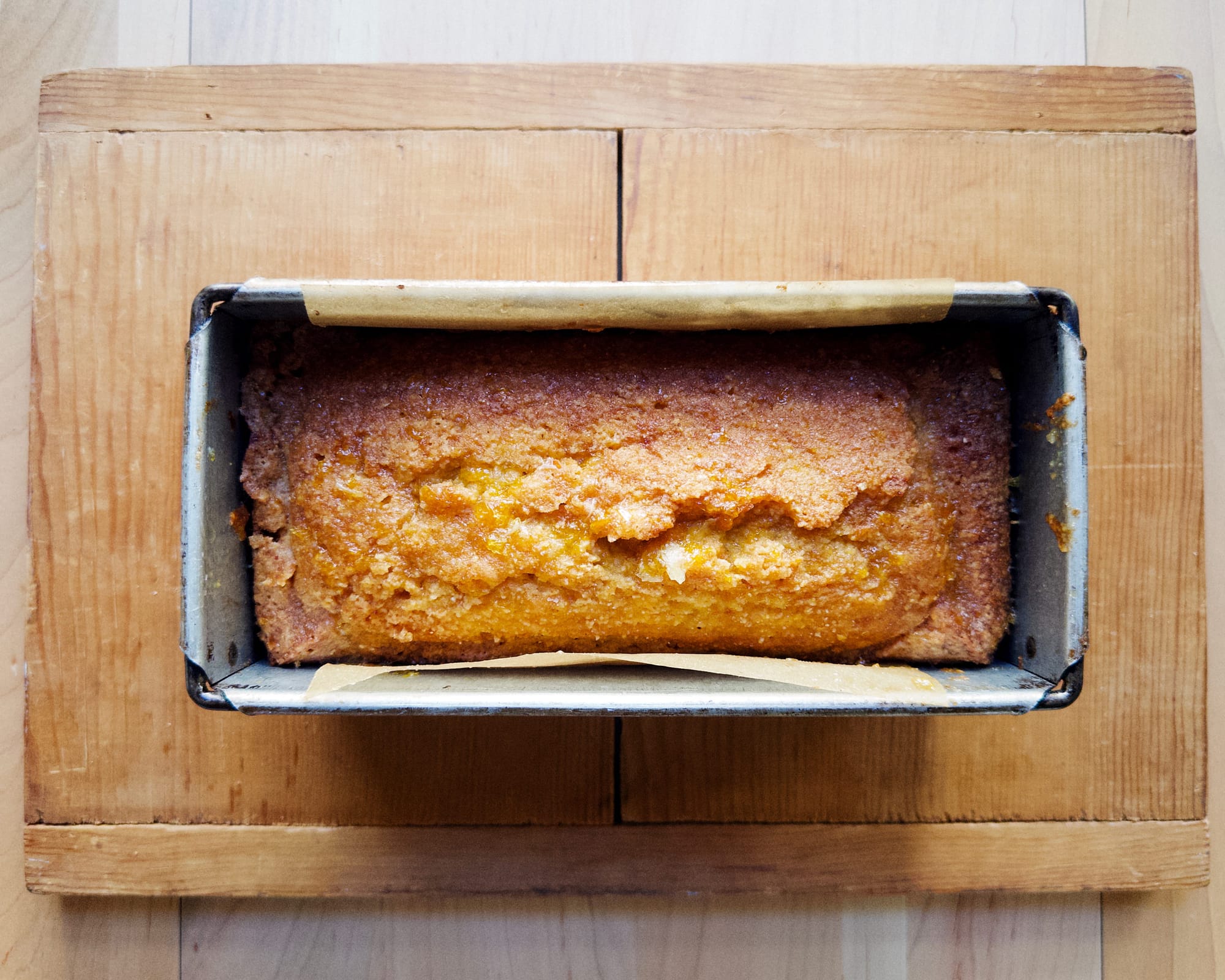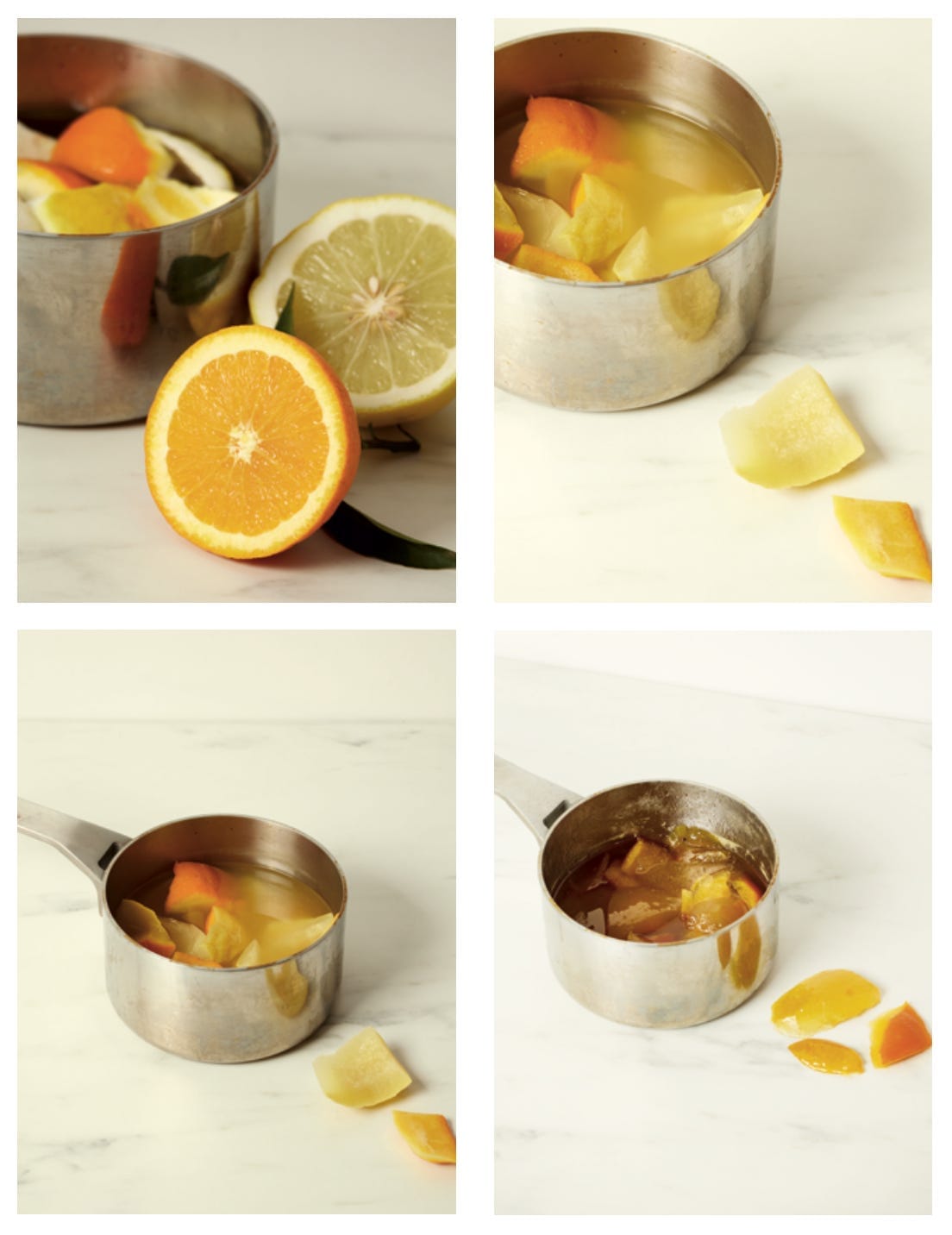Recipe: Syrup-Soaked Citrus Olive Oil Cornmeal Cake
From Camilla Wynne's "Nature's Candy"

Table of Contents
In retrospect, I am very glad I took last week off, for obvious reasons, and to be honest, I don’t have much to say about all that right now. It remains the case that we all need nourishment and a little sweetness—all the more so right now—so I plan to carry on.

This week’s post is coming a few days early, in time to remind you all about the related event happening tomorrow night (Tuesday, 11/12) here in Cambridge, which I’ll hope you’ll come to if you can. As I mentioned a few weeks back, my friend —of Jam Bake fame— has a new book out this fall, Nature’s Candy, all about candying fruits, and it is a book that I think many of you will want to have in your collections.
Like Jam Bake before it, Nature’s Candy combines a detailed and reliable set of techniques for a practice with ideas and recipes for what to do with the things you make. So even if you never thought you’d want to preserve fruits by candying them, once you see the many ways you can use candied fruits to glow up your desserts and sweets, you definitely will. And if you already use candied fruits in your baking, this book will give you all the intel and confidence you need to make them yourself, and have a far superior product to work with.
If you are in the Boston area and are free tomorrow, please come to the event that Camilla and I are doing at Dear Annie wine bar in Porter Square to celebrate the book:

Camilla will be serving several recipes from her book to share, and I’ll be bringing something myself inspired by it: Candied pumpkin-tahini brioche buns. (Yes, pumpkin is a fruit, and candying it is easy to do, and sublime.)

I made these for the first time this weekend, and they were very good. If you cannot be there to try them in person, the good news is that I plan to share the recipe here (along with my new and improved brioche recipe, for paid subscribers) in the next few weeks, so you can make them yourself at home.

In the meantime, Camilla and I wanted to share a recipe from her book, her Syrup-Soaked Citrus Olive Oil Cornmeal Cake, which I also made this past weekend for my mother’s birthday dinner, and it was a big hit. It doesn’t include candied fruit in it per se, but it gets a post-bake soak of a syrup that is leftover from candying citrus peel (the recipe for which is also included below), so it is a twofer. You get a delicious, easy-to-make cake and a container of candied peels you can use in something else (it is stollen or panettone season, after all).
Camilla’s recipe is below, annotated by me slightly with some testing notes, mostly to fill in some of the details that are found elsewhere in the book.
—Andrew
Syrup-Soaked Citrus Olive Oil Cornmeal Cake
Makes one 5 × 9-inch loaf cake
This cornmeal cake looks deceptively plain but is a textural joy and flavor punch thanks to a soaking with what I unofficially call a sweet vinaigrette—candied orange syrup, olive oil, lemon juice, and salt. I developed it when I worked at a wonderful bakery in Toronto called Robinson Bread, where we changed the flavor of our pound cake seasonally. At the time, we were coming off Christmas and had loads of leftover syrup from candying orange peel to work with. I was also obsessed with a syrup- and amaro-soaked cake that Michelle Marek (page 93) had made. Meanwhile, I was toying with a syrup-based salad dressing concept (which is still not there). Combining these inspirations and many cornmeal cake tests later, I feel I’ve landed on the perfect midmorning or afternoon snack. It would also be welcome as a dessert paired with fruit compote and cream, or even just alongside a glass of wine.
For the Cake
375 g (1 ¾ cups + 2 Tbsp) sugar
Zest of 1 orange
275 g (1 cup + 3 Tbsp) unsalted butter, at room temperature
60 mL (¼ cup) extra-virgin olive oil
5 eggs, at room temperature
245 g (1 ¾ cups) all-purpose flour
100 g (½ cup + 1 Tbsp) coarse-ground cornmeal1
1 ¼ tsp baking powder
½ tsp salt
For the Soak
125 mL (½ cup) candied orange syrup (pages 56-57; see below)
2 Tbsp lemon juice
2 Tbsp extra-virgin olive oil
Pinch of salt
Preheat the oven to 350°F (175°C). Grease a 5 X 9-inch2 loaf pan and line with parchment paper.
To make the cake, in the bowl of a stand mixer, combine the sugar and orange zest and rub together with your fingertips to perfume the sugar. Add the butter and oil, and cream with the paddle attachment on medium speed until light and fluffy. Add the eggs one at a time, beating well after each addition and scraping down the bowl if necessary. Add the flour, cornmeal, baking powder, and salt and mix on low until incorporated. Scrape down the sides of the bowl, then whip on medium speed for 10 seconds.
Transfer the batter to the prepared pan, smoothing the top with a small offset spatula. Bake for 1 hour and 5 minutes to 1 hour and 15 minutes, until a toothpick inserted in the center comes out clean. Meanwhile, make the soak.
To make the soak, in a small bowl or measuring cup, whisk the syrup, lemon juice, oil, and salt.
As soon as the cake comes out of the oven, transfer the pan to a wire rack. Use a pastry brush to brush the soak onto the surface of the cake until it has all been absorbed.3 Let cool completely before unmolding the cake.
The cake will keep, well wrapped, at room temperature for up to 7 days.
Candied Citrus Peel & Ginger aka The Method for Tough Customers

Citrus peel and ginger are candied fruit stalwarts that bring bitter and spicy complexity, respectively, to the table. On account of their texture, however, a slightly different approach is required, but it's as simple as adding a first step of simmering in water to soften them up. Unlike many candied peel and ginger recipes, this method doesn't call for multiple boiling water changes, the idea behind which is to eliminate strong flavors. As a lover of all things bitter and spicy, I'm not much concerned with trying to wrest what is essentially the character out of the candy. In this method, the peel or ginger is simply simmered until tender to prepare for candying. I think you'll find that the sugar does much to balance those flavors so that they're intriguing to the taste buds rather than overwhelming. The one exception to this is bergamot, a citrus fruit with such strong oils (you'll recognize the flavor from Earl Grey tea) that it must have its water changed at least three times during cooking.
This method works well for the majority of citrus fruits, such as oranges, lemons, and grapefruits, in their many varieties (though thin-skinned citrus, such as clementines, can simply be candied using the Almost All-Purpose method on page 25). To candy thick slices of citrus, see page 25. The exception here is limes, which become tough and unpleasantly chewy no matter the method (and I've tried many). If in doubt, check out the table on pages 56-57 for which method works best for your fruit.
As for ginger, young ginger is the best for candying, but unfortunately not easy to find. Check your local farmer's market in the fall to find the beautiful, tender specimens. A wellstocked Asian grocery store or natural foods store might have it as well (and make tea with the leaves if they come attached!). If you can't find it, however, you can make perfectly nice homemade candied ginger with the standard stuff at the grocery store.
Prep:
To prep the citrus peel, using a small serrated knife, cut the top and bottom of the fruit just enough to expose the flesh. Stand it up on its bottom, then vertically cut swaths of peel off the fruit, leaving just a little flesh clinging on. The clinging flesh will have a tender, jelly-like texture when candied. The denuded fruit may now be used to candy citrus supremes (page 43) or make citrus wheels or juice. I like to leave the peel in large pieces like this because it gives me options for how to use it later on, but if you know you want to make orangettes, for instance, you can cut the pieces into strips right away.
Alternatively, if you want to candy peels left over from juicing, simply scrape out the clinging, spent membranes, either by hand or with the help of a spoon, then cut the shells in half before proceeding.
To candy whole hollowed-out orange shells for Frozen Yogurt Candied Orange with Aperol Granita (page 167) or some other such use, cut the top ½ inch or so off the oranges so the flesh is exposed. Use a mini serrated knife or a paring knife to carefully cut between the peel and the flesh, removing the insides while keeping the shell intact (reserving flesh). Proceed as directed.
To prep the ginger, begin peeling the ginger by scraping off the peel with a metal spoon. Slice the ginger into ¼-inch-thick coins, or, if you know you want it diced, you can dice it now. (If you want to candy larger chunks of ginger, as for stem ginger, see page 28.)
Candying:
To candy, put the prepared peel or ginger into a pot and cover with at least 2 inches of water. Bring to a boil over high heat, then simmer until tender. For peels, no uncooked white pith should be visible (some peel will have little white dots, which is fine). This will take anywhere from 30 to 45 minutes depending on the fruit4 (thicker peels such as pomelo will take longest). For young ginger, this should take about 30 minutes; for standard ginger, it should take up to 45 minutes. Drain and set aside. If you want spicier ginger, reserve the water to use in the syrup, or save it to drink as ginger tea.
In the same pot, combine equal parts sugar and water (by weight), adding 1 tablespoon glucose or light corn syrup per 250 g (1 ¼ cups) sugar. (For each cup of prepared peel or ginger, you'll need about 250 g/1 cup water and 250 g/ 1 ¼ cups sugar.)5 Bring to a boil over high heat, then add the peel or ginger. Reduce the heat to medium and simmer gently, stirring occasionally, until shiny, translucent, and evenly cooked. The syrup will slightly thicken to a consistency somewhere between maple syrup and runny honey, but nothing more.6 This should take 1 to 2 hours, and you may need to reduce the heat progressively over that time to prevent it from boiling vigorously. Remove from the heat and allow to cool completely in the syrup at room temperature, preferably overnight, before storing, drying, or finishing (pages 59-60).

Excerpted from Nature’s Candy, by Camilla Wynne, published by Appetite Books, October 2024. Photography by Mickaël A. Bandassak.
Or polenta, such as Bob’s Red Mill brand. ↩
If you have a 9x4x4-inch Pullman pan, that will work nicely here too. ↩
This will take awhile, so don’t rush it. It took me about 10 minutes to get it all absorbed. ↩
My blood orange peels took about an hour and a half to tenderize, though I may not have cooked them vigorously enough. ↩
You’ll want to make at least 1-1/2 cups (3 oranges worth) of prepared peel to yield enough syrup for one cake. ↩
The slices of peel should all be just submerged when fully candied; if not, add back a little water to cover them. And if the syrup is stiff and thick after cooling, warm it back up on the stove and thin it out with a little water; it should be just runny. ↩
wordloaf Newsletter
Join the newsletter to receive the latest updates in your inbox.




